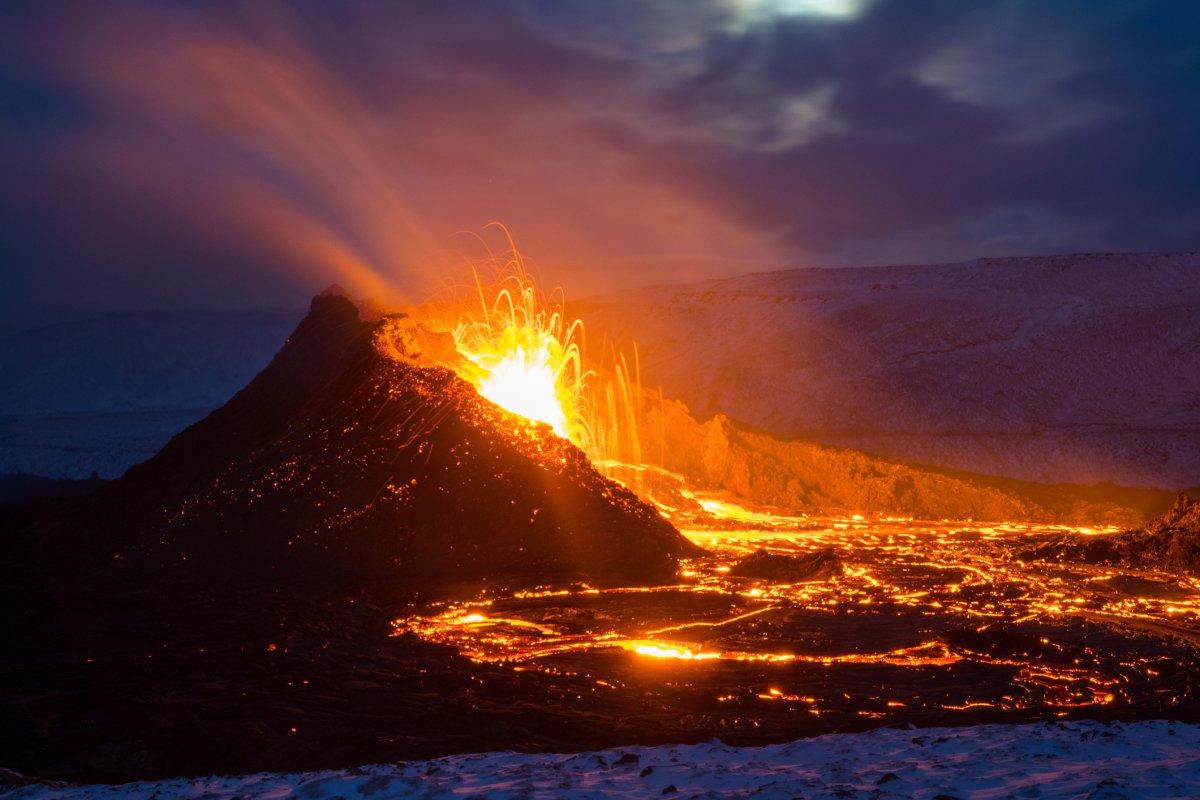Activity has been detected under a dormant volcano near Sitka, Alaska. Mount Edgecumbe has been inactive for at least 800 years but, following a spate of earthquakes in the area earlier this year, scientists have identified new signs that the sleeping giant may be waking up.
Research carried out by the Alaska Volcano Observatory in collaboration with the Alaska Satellite Facility used mathematical modeling based on satellite imagery to determine that this recent increase in seismic activity had been caused by the upward thrust of moving magma deep under the earth's surface.
SUBSCRIBE TO THE PARTING SHOT WITH H. ALAN SCOTT
ON APPLE PODCASTS OR SPOTIFY
"When magma is moving, it may either force its way along cracks, or form an expanding pool of melt at depth, and both of these processes can cause small earthquakes," David Pyle, a volcanologist at the University of Oxford, told Newsweek.
"Seismometers can detect very small tremors and earthquakes—much smaller than would be perceptible to a human. If we have an array of seismometers placed around a volcano, we can use the earthquake signals to locate the place where the earthquakes are being triggered."

As magma pushes its way up towards the surface, it also causes the earth above it to bulge, like a stretching balloon. "
Satellite radar instruments are a really important tool for volcano monitoring. They can measure very small changes in the shape of the Earth's surface," Pyle said.
"When magma is moving at depth, within the top few kilometers of the Earth's crust, we might see the surface bulging just a little from these radar measurements. And we can combine this with earthquake locations to work out in three dimensions the shape of the magma body inside the Earth."
The U.S. has more volcanoes than any other country in the world, most of which are located in Alaska. The U.S. Geological Survey has estimated that there are 161 potentially active volcanoes in the country, although only 42 of these have been active in the last 70 years.
Mount Edgecumbe is said to have last been active 800 years ago, but, according to geological evidence, its last major eruption was around 4,500 years ago. As a result, many have described it as being "dormant."

"'Dormant' is a word that is often used to describe volcanoes that haven't erupted for decades or centuries, and perhaps look completely quiet. But the implication is that dormant volcanoes might erupt again," Pyle said.
"Most volcanoes have a life cycle that lasts for hundreds of thousands of years. During this time, they may erupt when magma rises up from deep inside the Earth and reaches the surface. And then they may fall dormant again between eruptions, as the magma cools down. When another batch of magma rises up beneath the volcano, then we might see the volcano becoming restless once again, or 're-activated.'"
The recent rise in volcanic activity under Mount Edgecumbe does not necessarily mean it is going to erupt again any time soon, though.
"Detecting magma movement at depth is usually a reminder that a volcano is active, or potentially active, but it isn't necessarily a sign that a volcano will erupt," Pyle said.
"In the past 20 years, there have been many examples where scientists have used [satellite imagery and seismic activity] together to watch new magma arrive beneath a volcano. And in most of these cases, the disturbance quietens down after a few weeks or months, with no eruption."
Uncommon Knowledge
Newsweek is committed to challenging conventional wisdom and finding connections in the search for common ground.
Newsweek is committed to challenging conventional wisdom and finding connections in the search for common ground.
About the writer
Pandora Dewan is a Senior Science Reporter at Newsweek based in London, UK. Her focus is reporting on science, health ... Read more
To read how Newsweek uses AI as a newsroom tool, Click here.








